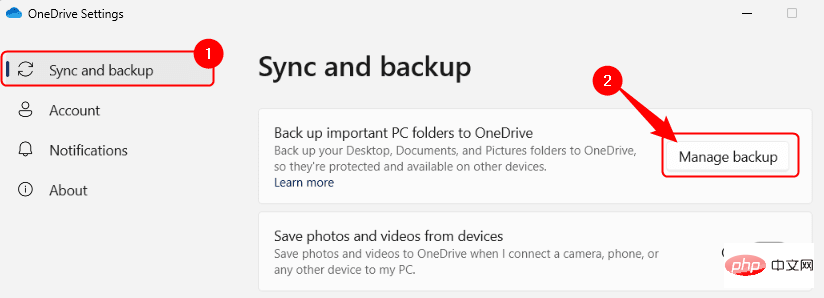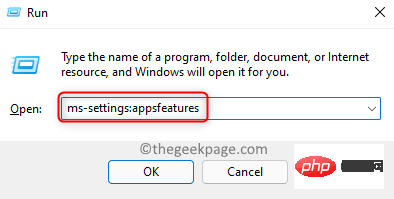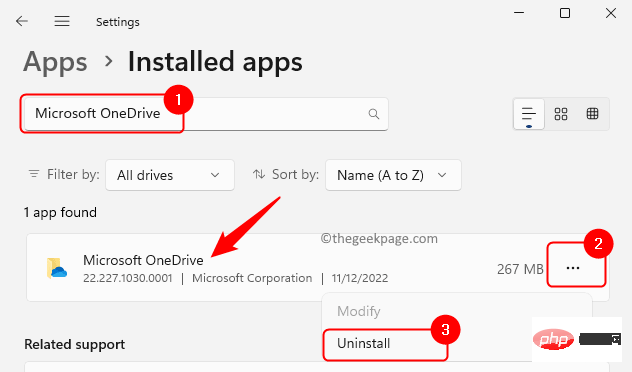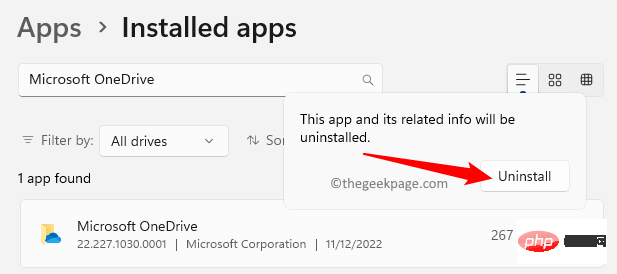How to stop saving files to OneDrive in Windows 11
OneDrive is a cloud storage service provided by Microsoft and installed with the Windows 11 operating system. Using OneDrive, Windows users can back up, sync, synchronize and access photos, files and any other data on all devices connected to their OneDrive account. Whenever you sign in to OneDrive, you'll be prompted to save files, documents, and photos to OneDrive. If you accept this request, your system will automatically upload files, documents, photos, and screenshots to your OneDrive account. Once this data is backed up to the cloud by OneDrive, you will only find shortcuts on the drive, to access these files you will need an internet connection. If you haven't set it up to automatically save your data, you may sometimes see a pop-up asking you to back up your data.
If you are using any other online cloud storage and want to prevent files on your Windows 11 PC from being saved to OneDrive, continue reading this article. Here, we have curated some methods that can help you disable OneDrive on Windows PC so that your files are not automatically saved in the OneDrive folder.
Method 1 – Temporarily pause syncing to OneDrive
Step 1. Open the OneDrive window by clicking the OneDrive icon located in the system tray.
Step 2. Here, click the Helpand Settings icon in the upper left corner of the window.
Step 3. In the menu that opens, click Pause Sync and select from the list when you want to stop syncing to OneDrive.

Step 4. This option pauses the sync process for the time you select and starts sync again when the time is up.
Method 2 – Pause OneDrive sync of a folder
Step 1. Find the OneDrive icon in the taskbar.
Step 2. Click this OneDrive icon, then click the Help and Settings (gear) icon in the upper left corner of the opened OneDrive window.
Step 3. In the menu that appears, click Settings.

Step 4. In the OneDrive Settings window, select the Sync & Backup tab.
Step 5. Then, click the ManageBackup button on the right associated with Back up important PC folders to OneDrive.

Step 6. You'll see a list of folders being backed up to OneDrive.
Here, turn off the toggle switches associated with the folders you don’t want to back up.
Step 7. Then, click to save changes.
It will start syncing only the files in the folders you have switched on.

Method 3 – Save Microsoft Office documents to your computer by default
Step 1. Open Microsoft Office application files that you want to save locally instead of OneDrive, such as Word/Excel/PowerPoint.
Step 2. Click the File menu.

Step 3. Then, click Save As in the left panel.
Step 4. Click "This PC" on the right.
Select a folder on your PC to use the "More" option Save File... link and click Save.

Step 5. To always save files to your computer instead of OneDrive, click "File" –> Options.

Step 6. In the Word Options window, go to the Save tab.
Step 7. On the right, scroll to the Save Document section and check the box next to Save to computer by default.
Step 8. Click OK to save changes.

Method 4 – Stop OneDrive from starting automatically
Step 1. On the taskbar, click the OneDrive icon to open the OneDrive window.
Step 2. Now, click on the Help and Settings (gear) icon in the upper left corner.
Step 3. Select the Settings option in the menu.

Step 4. In the OneDrive Settings window, make sure the Sync & Backup tab is selected.
Step 5. On the right, under the Preferences section, turn off the toggle switch next to Launch OneDrive when you sign in to Windows.

OneDrive icon in the taskbar.
Step 2. In the OneDrive window, click theHelp & Settings (gear) icon.
Now, selectSettings in the menu that opens.

OneDrive Settings window, select the Account tab.
Step 4. Click theUnlink this PC link below your name and linked account.

Unlink Account button to confirm.

Restart the computer.
Step 6. You will now unlink your Microsoft account from OneDrive and be able to save files directly to your computer. The OneDrive icon will still appear in the taskbar, but when you move your mouse over it you will see "Not signed in." Method 6 – Disable OneDrive using Registry EditorBefore making changes to the registry on your system, make sure you have created a backup that can be used to restore at any time if any issues arise Registry. step 1. Click theWindows key on your keyboard and type Registry Editor in the search bar.
Step 2. ClickRegistry Editor in the search results.

Computer\HKEY_LOCAL_MACHINE\SOFTWARE\Policies\Microsoft\Windows\OneDrive
OneDrive key, find the entry DisableFileSyncNGSC in the right pane.
Step 5. OpenDisableFileSyncNGSC by double-clicking it to edit its value.
In theedit window, change the Value Data field to 1.
Then, clickOK.

restart the PC. Check if you can prevent OneDrive from automatically saving files.
Note: If the OneDrive folder or DisableFileSyncNGSC DWORD is not found, you must create them.
Once you reach the Windows folder in the above path, right-click on theWindows folder and select New –> Key.
Name this new keyOneDrive.

OneDrive key and select “New –> DWORD (32-bit) Value” .
Name this DWORDDisableFileSyncNGSC.

value data to 1.
To enable OneDrive at a later point in time, simply change the value ofDisableFileSyncNGSC to 0.
Method 7 – Uninstall OneDriveStep 1. PressWindows R to open the "Run" box.
Step 2. Typems-settings:appsfeatures and press Enter to open the Installed Apps page in Settings.

Step 3. On this page, use the search box to find the Microsoft OneDrive app.
Step 4. In the search results, click the three-dot menu associated with Microsoft OneDrive and select Uninstall.

Step 5. Click "Uninstall" in the confirmation prompt to confirm the uninstall process of Microsoft OneDrive.

Step 6. After the uninstallation is completeRestartthe computer.
Now, OneDrive will be completely removed from your system, so your files will not be saved in the OneDrive folder.
You can still access your data using a web link and logging in.
The above is the detailed content of How to stop saving files to OneDrive in Windows 11. For more information, please follow other related articles on the PHP Chinese website!

Hot AI Tools

Undresser.AI Undress
AI-powered app for creating realistic nude photos

AI Clothes Remover
Online AI tool for removing clothes from photos.

Undress AI Tool
Undress images for free

Clothoff.io
AI clothes remover

AI Hentai Generator
Generate AI Hentai for free.

Hot Article

Hot Tools

Notepad++7.3.1
Easy-to-use and free code editor

SublimeText3 Chinese version
Chinese version, very easy to use

Zend Studio 13.0.1
Powerful PHP integrated development environment

Dreamweaver CS6
Visual web development tools

SublimeText3 Mac version
God-level code editing software (SublimeText3)

Hot Topics
 1376
1376
 52
52
 How to run a JAR file on Windows 11 or 10
May 12, 2023 pm 06:34 PM
How to run a JAR file on Windows 11 or 10
May 12, 2023 pm 06:34 PM
Windows 11 is capable of running a large number of file types with or without external third-party applications. Not only does it allow you to perform numerous tasks from the comfort of your PC, but it also ensures that you can take advantage of your PC's raw capabilities. Today, we'll take a look at a complex file type—jar—and tell you how to open it on your Windows 11 or Windows 10 PC. What is a jar file? jar is an archive package format that may or may not contain an executable Java program. These archives can contain Java applications or source code, which can then be used to compile and run applications without having to write separate code for each application. You can use various methods
 How to disable driver signature enforcement in Windows 11
May 20, 2023 pm 02:17 PM
How to disable driver signature enforcement in Windows 11
May 20, 2023 pm 02:17 PM
Microsoft has built several security features into Windows to ensure your PC remains secure. One of them is driver signature enforcement in Windows 11. When this feature is enabled, it ensures that only drivers digitally signed by Microsoft can be installed on the system. This helps most of the users to a great extent as it protects them. But there is a downside to enabling driver signature enforcement. Suppose you find a driver that works for your device, but it is not signed by Microsoft, although it is completely safe. But you won't be able to install it. Therefore, you must know how to disable driver signing in Windows 11
 4 Ways to Enable or Disable Microsoft Store on Windows 11 or 10
May 14, 2023 am 10:46 AM
4 Ways to Enable or Disable Microsoft Store on Windows 11 or 10
May 14, 2023 am 10:46 AM
Here are some possible reasons why you need to disable Microsoft Store: Stop unwanted notifications. Preserves data by limiting the background processes of the Microsoft Store to improve security or privacy Addresses some issues related to the Store or the apps it installs. Restrict children, family members, or other users from downloading applications without permission. Steps to Disable or Enable Windows Store Before following this tutorial, disabling the Microsoft Store will also stop the installation of any apps that require its services. To use the store, users need to enable its service in the same way as blocking it. 1. Block WindowsStore background service Let us from restricting Microsoft Store as
 How to fix Windows 11 activation error 0xc004c060
May 17, 2023 pm 08:47 PM
How to fix Windows 11 activation error 0xc004c060
May 17, 2023 pm 08:47 PM
Why am I encountering Windows 11 activation error 0xc004c060? First make sure you are using genuine Windows and that the license key is valid. Also, check if it was obtained from an official source and if the key is suitable for the installed OS version. If there is an issue with any of these, you may encounter Windows 11 activation error 0xc004c060. So be sure to verify these and if you find everything is in order, move on to the next section. If you obtained the key through unreliable means or believe that the installed copy is a pirated version, you will need to purchase a valid key from Microsoft. In addition to this, misconfigured settings, missing
 How to fix runtime error 339 on Windows 11/10
May 13, 2023 pm 11:22 PM
How to fix runtime error 339 on Windows 11/10
May 13, 2023 pm 11:22 PM
There can be several reasons why runtime error 339 occurs when running a program. Some of them may be that some ocx or dll files are missing, damaged or the dll or ocx is not registered. This would be an annoying experience for the smooth execution of the application. Here are some of the possible error messages you may see for Runtime Error 339 Error – Runtime Error 339: Component DUZOCX32.OCX is not registered correctly or the file is missing. Error – Runtime Error 339. Component MSMASK32.ocx or one of its dependencies is not registered correctly; the file is missing or invalid. Error – Runtime Error '339': Component 'FM20.DLL' or one of its dependencies was not correctly noted
 0x80010105: How to fix this Windows update error
May 17, 2023 pm 05:44 PM
0x80010105: How to fix this Windows update error
May 17, 2023 pm 05:44 PM
Microsoft regularly releases Windows updates to improve functionality or increase the security of the operating system. You can ignore some of these updates, but it's important to always install security updates. While installing these updates, you may encounter error code; 0x80010105. An unstable connection usually causes most update errors, and once the connection is reestablished you're good to go. However, some require more technical troubleshooting, such as the 0x80010105 error, which is what we will see in this article. What causes WindowsUpdate error 0x80010105? This error may occur if your computer has not been updated in a while. Some users may have permanently disabled W for their reasons
 5 Ways to Disable Delivery Optimization Service in Windows
May 17, 2023 am 09:31 AM
5 Ways to Disable Delivery Optimization Service in Windows
May 17, 2023 am 09:31 AM
There are many reasons why you might want to disable the Delivery Optimization service on your Windows computer. However, our readers complained about not knowing the correct steps to follow. This guide discusses how to disable the Delivery Optimization service in a few steps. To learn more about services, you may want to check out our How to open services.msc guide for more information. What does Delivery Optimization Service do? Delivery Optimization Service is an HTTP downloader with cloud hosting solution. It allows Windows devices to download Windows updates, upgrades, applications and other large package files from alternative sources. Additionally, it helps reduce bandwidth consumption by allowing multiple devices in a deployment to download these packages. In addition, Windo
 Not migrating device settings on Windows 11? This is the fix
May 13, 2023 pm 02:10 PM
Not migrating device settings on Windows 11? This is the fix
May 13, 2023 pm 02:10 PM
Obviously, not all device migrations go smoothly. Device settings not migrating is a very common issue in Windows 11 and may occur when upgrading from Windows 7 and 10. This issue may also occur if you have already installed the operating system and are installing new updates. When upgrading to Windows 11, your device also needs to meet the system requirements and other important elements required to function properly. If you wish to keep your personal data, files, photos, and apps from your previous installation of Windows, be sure to select the option Keep personal files and apps when you first upgrade to Windows 11. When you upgrade to Windows 11, the installer checks



